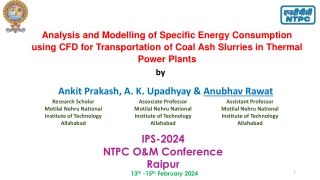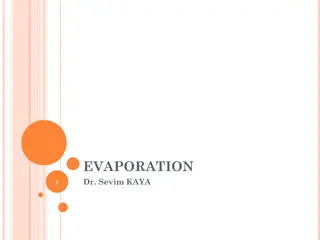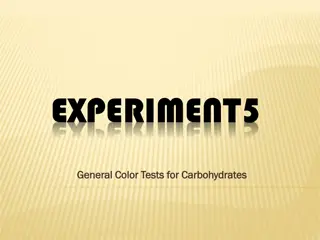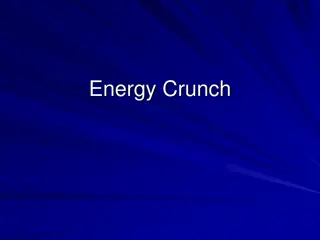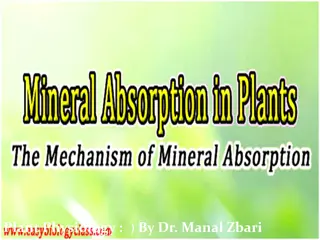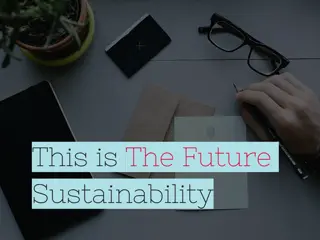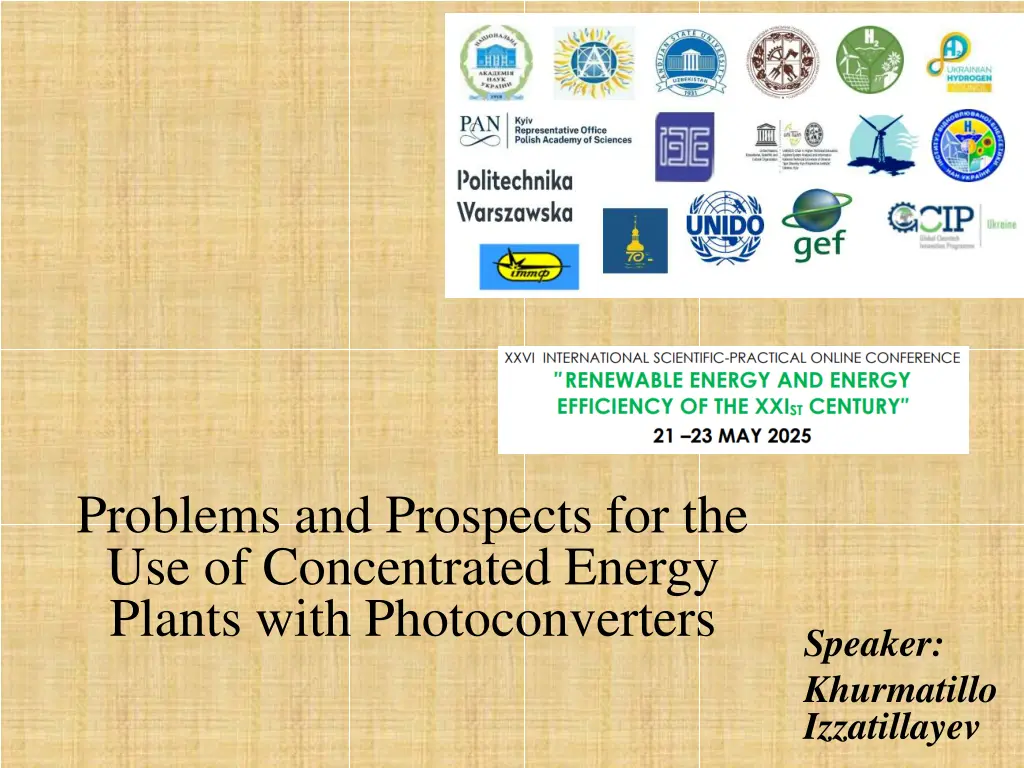
Future of Concentrated Energy Plants with Photoconverters
Explore the challenges and opportunities in the use of concentrated energy plants with photoconverters, presented by Khurmatillo Izzatillayev at Andijan State University. Discover the working principle, role of photoconverters, problems faced, technological solutions, and future prospects in this innovative field.
Download Presentation

Please find below an Image/Link to download the presentation.
The content on the website is provided AS IS for your information and personal use only. It may not be sold, licensed, or shared on other websites without obtaining consent from the author. If you encounter any issues during the download, it is possible that the publisher has removed the file from their server.
You are allowed to download the files provided on this website for personal or commercial use, subject to the condition that they are used lawfully. All files are the property of their respective owners.
The content on the website is provided AS IS for your information and personal use only. It may not be sold, licensed, or shared on other websites without obtaining consent from the author.
E N D
Presentation Transcript
Problems and Prospects for the Use of Concentrated Energy Plants with Photoconverters Speaker: Khurmatillo Izzatillayev
A Review of Technological Challenges and Future Opportunities Presented by: [Khurmatillo Izzatillayev] Institution: [Andijan State University] Date: [21-23 may 2025]
Introduction - Concentrated Solar Power (CSP) uses mirrors or lenses to concentrate sunlight onto a small area. - Photoconverters (such as PV cells or TEGs) convert light or heat into electricity. - Hybrid CSP systems with photoconverters offer high efficiency potential. - This presentation explores the key challenges and future development paths.
Working Principle of Concentrated Energy Systems - Concentrating collectors focus solar radiation. - Thermal energy is generated at the focal point. - Photoconverters (PV or TEG) are integrated to generate electricity. - System types: - Parabolic Trough - Solar Tower - Dish Stirling - Linear Fresnel Reflector
Role of Photoconverters - Photovoltaic (PV) cells: Convert light into electricity. - Thermoelectric Generators (TEG): Convert heat gradients into electric power. - Integration with concentrators increases energy utilization. - Challenges include overheating and thermal degradation of PV materials.
Problems and Challenges - Thermal Management: - Excessive heat lowers PV efficiency. - Need for effective cooling solutions (e.g., air, water, phase change materials). - Material Durability: - PV and TEG materials degrade under high flux. - Cost: - High initial investment in optics and tracking systems. - System Complexity: - Integration of optical, electrical, and thermal subsystems is technically demanding.
Technological Solutions -Advanced Cooling Techniques: - Heat sinks, liquid cooling, microchannel cooling. - Spectral Splitting: - Dividing light spectrum for simultaneous PV and TEG use. - Use of Nanomaterials: - Nanocoatings for heat resistance and selective absorption. - Tracking Systems: - Dual-axis solar trackers for maximum concentration.
Prospects and Future Opportunities - Hybrid Systems: - Combining PV + TEG + CSP for higher total efficiency. - Thermal Storage Integration: - Molten salt or PCM for energy dispatchability. - Desalination and Industrial Heat: - Non-electric uses of concentrated thermal energy. - Rural Electrification: - Off-grid applications in sunny regions.
Research Directions - Simulation and modeling of hybrid systems (e.g., using COMSOL). - Optimization of optical design for uniform flux distribution. - Experimental testing under real climate conditions. - Development of cost-effective, thermally stable PV and TEG materials.
Conclusion - Concentrated energy plants with photoconverters offer high potential. - Major challenges include thermal degradation, cost, and integration. - Ongoing innovations in materials, cooling, and hybridization are promising. - Further research and pilot implementations are crucial.
References - Kalogirou, S. (2004). Solar thermal collectors and applications. - Kraemer, D. et al. (2011). High-performance thermoelectric generators. - Fuqiang, W. et al. (2017). Progress in concentrated solar power technology.
THANK YOU FOR YOUR ATTENTION. +998 (93)782-69-60 @izzatillayevxurmatillo956@gmail.c om Khurmatillo Izzatillayev Andijan State University



